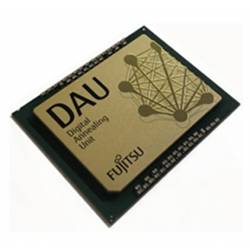
Quantum computing is still in its infancy, but "tastes" of the quantum "flavor" of computing are becoming increasingly available.
D-Wave Systems of British Columbia, Canada, demonstrated the first prototype quantum computing system, a 16-qubit (quantum bit) quantum annealing processor, in 2007, and has been selling quantum computing hardware since 2011.
Some organizations are offering access to prototype quantum computing chips via the cloud, to help developers and others learn about quantum computers by either programming them, or solving small-scale problems through their use. These include IBM (IBM Q) and Fremont, CA-based Rigetti Computing (Forest, based on the same genre of superconducting architecture as IBM and D-Wave).
Google's Quantum Artificial Intelligence Lab, a joint venture of the search giant, the National Aeronautics and Space Administration's (NASA) Ames Research Center, and the Universities Space Research Association (USRA) studying "the application of quantum optimization to difficult problems in Artificial Intelligence," is equipped with quantum computing hardware from D-Wave Systems, which it allows researchers to access.
Google's Quantum Computing Playground offers browser-based access to a simulation that can efficiently simulate quantum registers up to 22 qubits.
The University of Bristol's Quantum in the Cloud service offers access to both a quantum software simulator, as well as a prototype quantum processor "that allows for the input of two protons prepared as qubits."
While not going "full quantum," Japan's Fujitsu is offering what it describes as a quantum-inspired hardware emulator chip, the Digital Annealer, which it says can solve large-scale commercial problems today. Like D-Wave's 2000Q quantum computer unveiled early last year, the Digital Annealer is aimed only at combinatorial optimization problems. It does not require supercooling as true quantum computer chips do, since Digital Annealer is fabricated as a traditional complementary metal oxide semiconductor (CMOS). It already is being offered in Japan as a cloud service (which will be extended later this year to other global regions).
"Fujitsu's offering is not really a quantum computer, but it effectively mimics the vast parallelism of a quantum computer using standard CMOS processes," said Prem Kumar, director of the Center for Photonic Communication and Computing at Northwestern University in Evanston, IL. "It represents a new way of massively connecting digital bits with gradations that are different from a neural net, but rather are quantum-inspired."
"Full connectivity among our emulated nodes is actually virtual, since we store node states and their connections in two memories, a 1,024-bit memory representing our emulated binary nodes and a 16-Mbit memory representing all their connections with 16-bit resolution," explained Ali Sheikholeslami at the University of Toronto, who designed the Digital Annealer alongside Fujitsu's scientists. "It is also very fast, with nanosecond-scale cycle times, and easily scalable, with the next chip upgrade to have 8,192 bits with 64-bit resolution for connections."
In 2016, Fujitsu researchers and colleagues at the University of Toronto constructed a prototype of the Digital Annealer using field-programmable gate arrays (FPGAs). Last year, the researchers announced the Digital Annealing architecture could be utilized to solve combinatorial optimization problems by using software from British Columbia-based 1QB Information Technologies Inc. (1QB), which also writes quantum software for IBM and D-Wave. In May of this year, Fujitsu announced the launch of the Fujitsu Quantum-inspired Computing Digital Annealer Cloud Service, as well as the launch of a Digital Annealer Technical Service to support the application development for customers to define issues, as well as build and utilize mathematical models.
"Los Alamos National Labs also implemented its own version of a digital annealing technique using FGPAs to emulate quantum annealing," said Nandakishore (Nandu) Santhi, a computer scientist in the Los Alamos National Laboratory's Information Sciences group's Computer, Computational, and Statistical Sciences (CCS) Division, who has used the division's D-Wave quantum computer, as well as both the IBM and Rigetti cloud services. "We used a square lattice with nearest neighbor connectivity and an algorithm that adjusts its connection gradations to find the lowest energy state. Because of the local minimum problem, you have to introduce random changes and keep track of the best results so far to get a reasonable approximation of the optimum answer. But with the inherent parallelism among nodes and nanosecond iterations, you can very quickly solve problems using this approach."
A major downside of Fujitsu's offering is that, like D-Wave, it is restricted to the combinatorial optimization algorithms epitomized by the Traveling Salesman Problem. However, combinatorial optimization is widely used in transportation, networking, logistics, finance, chemistry, medicine, aeronautics/space, and many other fields.
"Combinatorial optimization is an important and widely impactful class of problems. Almost every scientific discipline has instances of problems that employ combinatorial optimization," said Sriram Krsihnamoorthy, System Software and Applications Team Lead in Pacific Northwest National Laboratory's High Performance Computing Group.
"If Moore's Law ends as expected, then it's in the strategic interest of the U.S. to find out what will be next. That makes digital annealers very interesting to Los Alamos National Laboratory because something has to be done, whether it's quantum computers, digital annealers, neuromorphic chips, or whatever," said Stephan Eidenbenz, a Los Alamos National Laboratory scientist and director of its Information Science and Technology Institute, who has used the D-Wave quantum computer and IBM and Rigetti's online quantum services.
Eidenbenz said he would find it "very interesting if Fujitsu's performance really exceeds D-Wave's. Already, a very lively debate is ongoing as to whether D-Wave can solve problems faster than classical software implementations of annealing. D-Wave finds some problems that it solves very well, but do not run well using standard statistical software. Then the classical camp comes up with software that beats D-Wave, and back and forth it goes. Comparing these efforts to Fujitsu's hardware annealer has yet to be done, but looks promising."
R. Colin Johnson is a Kyoto Prize Fellow who has worked as a technology journalist for two decades.



Join the Discussion (0)
Become a Member or Sign In to Post a Comment